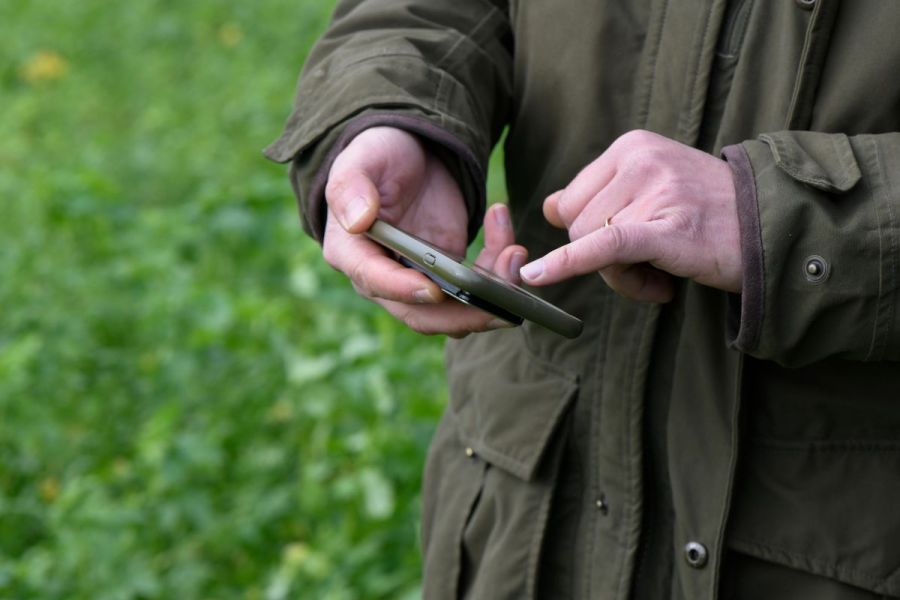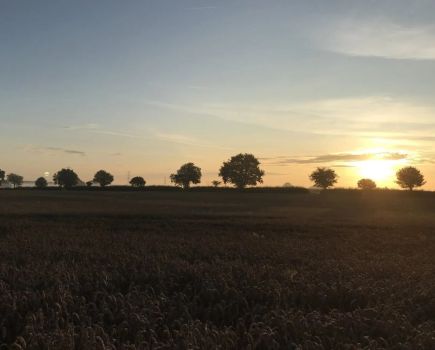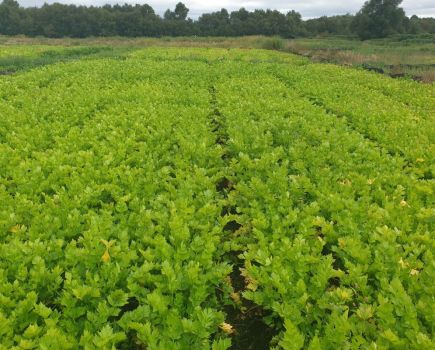Digital technology can play a crucial role in helping farmers become more sustainable. CPM looks at where data can give a valuable steer and chats to a grower who is using technology to navigate his path to a sustainable future.
“It’s about the best of people and the best of technology in combination.”
By Mike Abram
Sustainability is such a nebulous concept, it’s no surprise that some farmers may be unsure how best to implement it in practical terms on farm.
Part of the confusion perhaps lies in sustainability coming in many different forms. There are the big picture concepts, such as improving air and water quality and increasing biodiversity – the types of things government policy is targeting to encourage farmers to think and do more about to protect. But then there’s also financial sustainability.
The need to be profitable to remain in business often drives efficiency improvements on farm, which can have a positive effect on reducing greenhouse gas emissions and protecting the environment.
But there are other ways of looking at sustainability. You can consider the concept from the angle of the practices being used on farm, and their long-term effectiveness. For example, lack of a considered pesticide strategy may shorten the period when it can be used effectively against its target because it could drive resistance development.
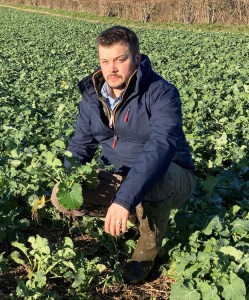
Many growers are implementing sustainable practices every day on farm, even if they don’t perceive them as such, says Rob Nightingale.
The good news is that many growers are implementing sustainable practices every day on farm, even if they don’t perceive them as such, says Rob Nightingale, national technical sustainability specialist for Frontier Agriculture.
Most efficiency gains – often implemented primarily for financial reasons – will have a positive impact on sustainable crop production, for example, by reducing greenhouse gas emissions, he says.
For most farmers, improving the sustainability of their crop production will be based on implementing small changes rather than radically changing the farm business, stresses Tom Parker, Frontier’s head of customer digital solutions. “But there are big improvements growers can make and one key tool that could help is digital technology.”
He highlights four stages where a digital steer can prove to be really helpful. “The first is during planning, where there’s the opportunity to challenge what can be done differently and better as opposed to following the same cycle season after season.”
A theoretical example could be continually applying slurry or anaerobic digestate to a maize field with a slope down to a river and potential pollution risk, says Rob. “Once the risk has been identified, an obvious choice is switching the whole field to grass or another lower risk whole crop option.”
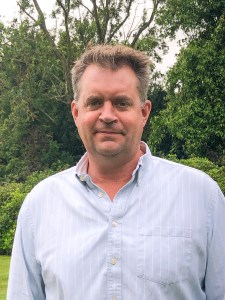
For most farmers, improving the sustainability of their crop production will be based on implementing small changes rather than radically changing the farm business, says Tom Parker.
But what if mapping data analysis shows only 30% of the field is at high risk because of the slope? “That potentially opens up a conversation about managing that part of the field in a different way,” he says.
Digital technology can also help during the day-to-day implementation of plans, continues Tom. He gives the example of creating application maps to make sure any operational mistakes are minimised, making sure buffer zones are observed when applying fertiliser or pesticides.
It’s also a great aid when field-walking, adds Rob. “I’ve used live biomass imaging in our MySoyl app to help pinpoint where the high and low biomass areas are in the field.”
Finding the good and poorer performing areas isn’t typically that difficult, but the imagery can help assess and give a representative view of the field. “An example is when deciding on growth regulator use in oilseed rape,” says Rob.
“Human nature means you take in the first 100 metres and then it all blends a bit, and you come out of the field remembering the last 100 metres better. But if you have a biomass map, you have data to compare with your visual assessment.”
Recording what’s actually happened in the field is the third area where technology makes life easier, says Tom. “From an accountability and traceability point of view, this is important – it could either be on plan or not – while creating a feedback loop to help improve planning.”
“Finally, data analysis will provide objective evidence at the end of the season when reviewing performance – potentially helping take out any emotion or erroneous perceptions from decision making.”
Frontier’s MyFarm platform helps its users in this way, explains Tom. For example, it can help identify areas of the farm that are continually underperforming to aid decisions about land use change, or areas that outperform the farm average which could potentially be pushed harder for output.
Digital tools won’t replace the expertise of the farmer or adviser though, he stresses. “It’s an addition rather than a replacement – it’s about the best of people and the best of technology in combination.”
An example where that is beneficial is barley yellow dwarf virus control in cereals, says Rob. “While using one or two insecticides each autumn might be an easy and, currently, a reasonably successful strategy for dealing with the issue, it’s not the most environmentally friendly solution and risks resistance development with a limited choice of modes of action available.”
There are other options. Delaying drilling usually reduces infection risk but comes with the potential consequence of a reduction in yield and not being able to get the crop drilled if weather deteriorates.
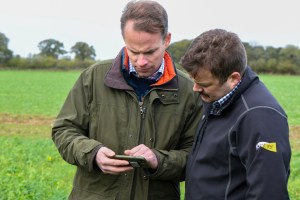
Instead of weighing up the variables and making an educated guess, incorporating data into the decision can make it more informed.
“Farmers can weigh up those conflicting variables and make an educated guess about the latest they can risk delaying drilling, but incorporating data into that decision can make it more informed.
“For example, analysing historical yield data from different drilling dates could help identify what the potential yield drop off might be, while using Rothamsted’s Insect Survey and weather station data can ascertain in-season likely risk.”
Similar use of data could also help with decision-making for disease control. Frontier is using weather data to model for disease risk, biomass mapping to understand crop growth rates, and leaf analysis to assess latent disease infections of septoria and yellow rust to help inform decisions around disease control.
Supply chain data and benchmarking is another area that can help drive sustainability on farm, says Tom. “Supply chain data requirements can be seen as onerous and a requirement on the farmer, but it should be viewed as a win-win with value being delivered back onto the farm.”
While some might still be sceptical, Tom says analysis provides valuable insights for growers. “Within a closed group, you can explore and answer why some growers find it more difficult to reach targets or specifications. Those insights into differences help companies like Frontier support and improve farm businesses, individually and as a cohort.”
A lot of crop production insights are delivered to Frontier customers through MyFarm analytics, he adds, alongside the platform’s other functionality, including information about grain sales and pricing, crop recording, precision farming and account management.
An advantage of Frontier’s national breadth is being able to put those insights into both a farm specific and national context, he adds.
“For example, we can use gross margin mapping to assess the absolute performance of the farm as opposed to it being relative. It can be easy to talk about the good areas or the bad, which is relative, but once performance is considered in financial terms, it’s easier to decide which areas are not contributing at the appropriate level and whether there are different approaches to improve them,” he concludes.
On the road to sustainability
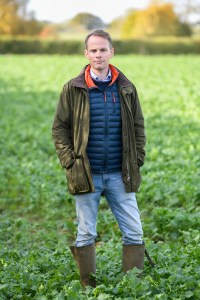
With Frontier’s help, Robert Scott has established a living mulch of a white clover blend and bird’s foot trefoil under his oilseed rape crop.
Sustainability for Robert Scott’s farming business is a mix between lowering financial risk and transitioning away from intensive arable contracting to a more climate-friendly, extensive mixed-farming operation.
“I’m trying to improve my asset for the next generation while keeping the current one profitable,” he says.
A wet 2019, together with a visit to the Groundswell Event, were the catalysts for driving a change to what he believes will be a more sustainable approach. Both organic and a regenerative no-till system were considered by the 1600ha family business, which grows a range of combinable crops and sugar beet for seven landowners in mid-Norfolk, and contract fattens 1500 lambs and 10,000 free-range turkeys over winter.
While mixed no-till organic farming remains the end goal, family discussions pinpointed a reduction in carbon emissions to help mitigate climate change as the more pressing issue, compared with a complete removal of all pesticide use immediately. The regenerative route also better fitted their customer profile, he explains.
Around 60% of the farm’s crops are now established using no-tillage, with virtually all the rest following some form of non-inversion tillage. The plough is still used if it’s considered the best option, he says. “I’m not evangelical, but we’ve made huge strides in what we’re trying to achieve.”
Data is proving useful in understanding the impact of changes being made on farm. Telematics tracked by the MyJohnDeere app supply data on fuel use, as well as providing extremely valuable logistical information during the season.
“I use the app probably every couple of hours to know how the team is getting on, and to review fuel use throughout the cultivation/drilling season, which plays back to contract charges. I’m able to show my farming customers the fuel use for cultivation passes on their farm and soils compared with others.”
Switching to predominately no-till establishment saved around £70,000 in diesel last year, he says. “Add that to labour, fertiliser and spray savings and it adds up. It’s become more apparent since the war in Ukraine that cash flow is king and taking out risk is important. Regenerative farming has allowed us to do that.
‘I’m conscious that I’m farming for the current generation of the family and need to provide an income for my parents and grandparents, looking out for my customers’ income, and provide assets, both financially and environmentally, for the next generation.”
That means environmental improvement has to go hand-in-hand with profitability, he says. No insecticides have been used on the farm for the past 18 months, with other inputs also reducing, including nitrogen fertiliser, which last season was reduced to 180kgN/ha, from the usual standard of 220kgN/ha.
“A lot of the reduction was based on price, but I did question myself when the wheat market picked back up and whether we should actually be feeding crops. But having done protein analysis with Frontier, I think we got it right.”
Robert is using tissue and sap analysis to help fine-tune nutrient programmes this season. “Generally the plan is to apply around 180kgN/ha to wheat again this year, unless the sap tests suggest anything different. On some stronger land, where we can drive margin a little more, we might feed the crop a little bit up to 200kgN/ha.”
Longer-term, the aim is to optimise nitrogen inputs even further. “In an ideal world we’ll end up with perhaps 100kgN/ha of UAN, plus two or three foliar applications to reach 135-140kgN/ha in total on wheat.”
In preparation for implementing that plan, more legume nitrogen-fixing crops are being grown in front of wheat, while he thinks growing deeper rooting herbal leys (GS4), containing lots of legumes, will be a useful tool in the future.
“Currently GS4s have been on poorer land, small or odd-shaped fields but as I become more invested in livestock farming and understand the pinch points on time and labour, I think we could start to roll them out into the main arable rotation as two year-leys. Stacking that with livestock income would give real scope to make them work.”
Robert’s also using and experimenting with other techniques to reduce inputs. With Frontier’s help, he’s established a living mulch of a white clover blend and bird’s foot trefoil under his oilseed rape crop, with the intention of following with a direct drilled wheat crop, which will be grazed with his sheep at an appropriate point.
Last season, he split a forward, direct drilled winter wheat field in thirds to mob-graze 500 store lambs for four to five days as a potential pre-cursor to reducing inputs. “We shepherd the sheep, so we have control of moving them on and off fields quickly.”
NDVI imagery was used to help monitor progress and subsequent recovery and was then tied in with yield mapping. “We had a yield knock on one section we went slightly harder at, while on the other, we got it right compared with the control. It was a good lesson, and while we didn’t reduce inputs on the trial as it would have been too many variables for our experiment, from the results I would be happy to drop a growth regulator and T1 (if grazing), depending on the season.”
Grain analysis suggested the sheep took some nitrogen away from the crop, he adds. “I think you might need to be careful with sheep, especially if you’re producing milling wheat.”
This season, the Farming Equipment and Technology Fund (FETF) has been used to purchase a weather station, which includes a programme to model disease risk. In combination with Frontier, the farm is going to trial this to help target fungicide use effectively.
A four-way wheat blend of KWS Extase, Champion, KWS Dawsum and Gleam is also being grown for the first time this season and he’s interested to see if it has any impact on disease incidence.
Another, perhaps forgotten, sustainability pillar Robert is keen to improve is his social engagement in the local community.
“I live in a village that 50 years ago, 50% of households would have had some connection with agriculture. Now there’s little understanding of where our food comes from.
“I joined my local parish council two years ago and hadn’t realised there was such a disconnect about farming. So one of my next steps is to do a farm walk with people from the local area to explain what we’re doing and why, and then share some produce with them.”
Sustainability in Practice
Farming has entered a new era and change is never comfortable. CPM has partnered with Frontier Agriculture, who are uniquely placed to provide insight and work to add value across the whole supply chain.
In the second of three articles, we find out how digital technology can support decision making on the farm and practical changes for a more sustainable future.
Through its close customer relationships with farmers and grain consumers, Frontier is able to provide expert advice, services and solutions across all aspects of sustainable crop production, from seed in the ground to grain in the store.
Its specialist advisors support UK farmers across seven key areas essential to productivity and longevity, offering flexible, tailored and practical approaches that suit the needs of individual farm businesses.
Learn more at www.frontierag.co.uk/sustainable-crop-production
This article was taken from the latest issue of CPM. For more articles like this, subscribe here.
Sign up for Crop Production Magazine’s FREE e-newsletter here.

